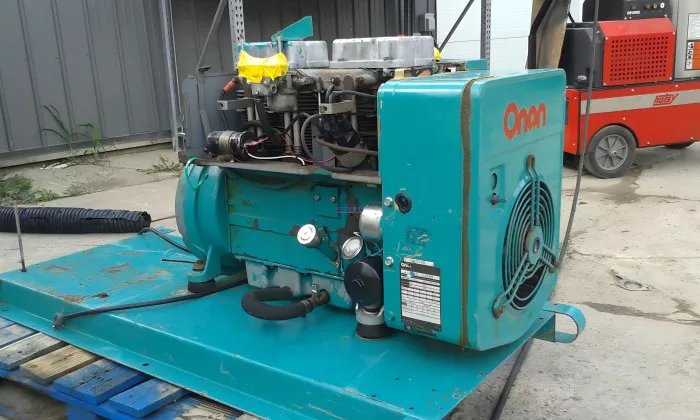Understanding the operation of a diesel generator involves a detailed examination of its components and processes. This article provides a comprehensive step-by-step guide on how diesel generators work, from the initial fuel intake to power generation and distribution.
1. Diesel Generator Overview
1.1 What is a Diesel Generator?
A diesel generator is a machine that converts diesel fuel into electrical energy through a combination of a diesel engine and an alternator. It is widely used as a backup power source or for continuous power supply in various applications, including industrial, commercial, and residential settings.
1.2 Key Components
Diesel Engine: The engine burns diesel fuel to generate mechanical energy.
Alternator: The alternator converts the mechanical energy from the engine into electrical energy.
Fuel Tank: Stores the diesel fuel used by the engine.
Control Panel: Manages the operation of the generator and monitors performance.
Cooling System: Prevents the engine from overheating.
Exhaust System: Channels and reduces emissions from the engine.
2. Step-by-Step Operation of a Diesel Generator
2.1 Fuel Intake
Diesel Fuel Storage
Diesel fuel is stored in the generator’s fuel tank. The tank is usually located at the base of the generator and can vary in size depending on the generator’s design and intended use.
Fuel Delivery
Fuel is delivered from the tank to the engine through a fuel pump. The fuel pump ensures that an adequate supply of diesel reaches the engine for combustion.
2.2 Combustion Process
Air Intake
Air is drawn into the engine through an air filter. The filter cleans the air to ensure that only clean air enters the combustion chamber.
Compression
The diesel engine compresses the air within the combustion chamber to a high temperature and pressure. This compression makes the air more combustible when mixed with diesel fuel.
Injection
Diesel fuel is injected into the compressed air within the combustion chamber. The high pressure causes the fuel to atomize, creating a fine mist that ignites spontaneously due to the high temperature.
Combustion
The diesel fuel burns rapidly, creating a high-pressure and high-temperature environment. This combustion process generates mechanical energy in the form of expanding gases that push the engine’s pistons.
2.3 Mechanical Energy Conversion
Piston Movement
The expanding gases push the engine’s pistons down the cylinders. This movement converts the energy from the combustion process into mechanical energy.
Crankshaft Rotation
The pistons are connected to a crankshaft, which converts the up-and-down motion of the pistons into rotational motion. The crankshaft turns at high speeds, generating mechanical energy.
2.4 Electrical Power Generation
Alternator Operation
The rotational motion from the crankshaft drives the alternator. The alternator consists of a rotor and stator, and it converts mechanical energy into electrical energy through electromagnetic induction.
Electromagnetic Induction
The rotor, which is connected to the crankshaft, creates a rotating magnetic field. This field induces an electric current in the stationary stator windings. The result is the generation of alternating current (AC) power.
Voltage Regulation
The control panel includes a voltage regulator that ensures the electrical output remains stable and within the desired voltage range. It adjusts the output to match the power requirements of connected loads.
2.5 Power Distribution
Electrical Output
The generated electrical power is transmitted from the alternator to the control panel, where it is monitored and managed.
Load Connection
Power is then distributed to various electrical loads, such as machinery, lighting, or appliances, depending on the application of the generator. The control panel manages the distribution and ensures that power is delivered efficiently.
Synchronization
In applications where multiple generators are used, synchronization systems ensure that all generators work together seamlessly, maintaining a consistent power supply across all connected loads.
3. Maintenance and Monitoring
3.1 Routine Maintenance
Regular Checks
Routine maintenance includes checking fuel levels, oil levels, and coolant levels. Regular inspections ensure that the generator operates efficiently and prevents potential issues.
Scheduled Servicing
Scheduled servicing involves more comprehensive checks and replacements, such as changing oil and filters, inspecting belts and hoses, and testing the battery.
3.2 Control Panel Monitoring
The control panel provides real-time information about the generator’s performance, including fuel consumption, load levels, and operating temperature.
3.3 Remote Monitoring
Advanced generators may include remote monitoring systems that allow operators to track performance and receive alerts about potential issues from a remote location.
see also: What Is the Smallest Diesel Generator?
4. Case Studies and Practical Applications
4.1 Industrial Use
In industrial settings, diesel generators are used to provide backup power during outages or to support continuous operations. Large-scale generators with high power outputs are common in these applications.
4.2 Commercial Use
Commercial facilities, such as office buildings and retail spaces, use diesel generators to ensure uninterrupted power supply for critical systems and operations.
4.3 Residential Use
For residential applications, diesel generators are often used as backup power sources during outages, providing electricity for essential appliances and systems.
Conclusion
Understanding the step-by-step operation of a diesel generator is essential for ensuring its effective use and maintenance. From fuel intake to power distribution, each component plays a crucial role in converting diesel fuel into reliable electrical power. Adhering to maintenance protocols and monitoring systems helps maintain optimal performance and longevity of the generator. By following these procedures, users can ensure that their diesel generators provide consistent and efficient power, supporting a wide range of applications and needs.
Related topics:
- Can Diesel Generators Run on Biodiesel?
- Sweden Donates 13 Diesel Generators to Ukraine Amid Energy Crisis
- Why Diesel Generators are So Expensive?

